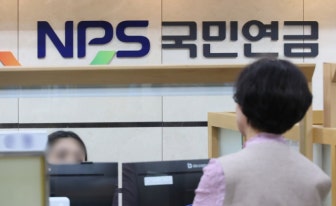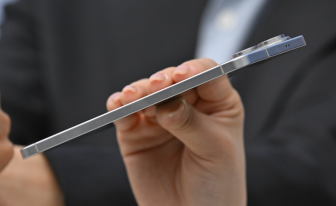[INTERVIEW]
MUNICH — Two decades ago, BMW was the first brand to bring the head-up display to life. Now, it goes a step further with the world's first type of panoramic display.
The Panoramic Vision display, iX3's 43-inch-wide pillar-to-pillar display positioned just below the windshield, was born out of BMW’s desire to ensure that every passenger in the car — not just the driver — can clearly see the critical information appears in the head-up display, according to Stephan Durach, senior vice president of UI/UX development at BMW.
“As the next step of the head-up display, we came up with the idea from the limitations that people can only look at the instrument cluster through the steering wheel," Durach said during an interview with the Korean press on the sidelines of the unveiling event of the iX3 in Munich on Friday.
The panoramic display contains functions traditionally located on the dashboard, such as the date, charging status and vehicle settings, allowing drivers to access critical information without looking away from the road. Driving-related data like remaining range is fixed on the left side of the screen, while up to six display items can be customized by the driver.
It aligns with BMW's principle of "hands on the wheel, eyes on the road," allowing drivers to access essential information without diverting their gaze — helping them stay focused and enhancing safety.
“The panoramic vision is actually replacing the classical instrument cluster we have in our car and bringing every relevant information at the right point at the right location at the right point in time for your user,” Durach said.
It is also designed to be viewable in bright sunlight or for drivers wearing polarized sunglasses.
Sometimes, when developing cars with unique and innovative designs and features, designers and engineers clash over whether a particular design can be realized. But that scenario didn’t happen with the iX3, as designers wholeheartedly embraced the panoramic display design.
“Rather, our designers loved this concept because it creates a completely new degree of freedom in the interior that they can completely rethink the interior,” he added. “As you can see, you can design a completely new steering model because there is no instrument cluster you have to look through.”
Customer feedback on over 10 million BMWs was studied for the display development, including the Korean market.
Durach also said that he will soon announce a speech engine tailored for Korea.
“Pretty soon, we’re going to announce our dedicated Korean speech engine as well,” he said, referencing a potential collaboration with Korean firms Naver and Kakao. “The Korean market is a very, very important market for BMW."


![BMW's latest iX3, the first model in its revolutionary “Neue Klasse” family. [SARAH CHEA]](https://imgnews.pstatic.net/image/640/2025/09/07/0000076304_003_20250908181414801.jpg?type=w860)















































.png?type=nf190_130)
.png?type=nf190_130)




.png?type=nf190_130)


